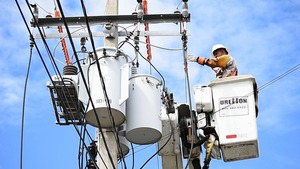Corps
Potential transformers (PTs) play a crucial role in electrical systems, stepping down high voltages to safer, more manageable levels for measurement and control purposes. However, working with potential transformers requires meticulous attention to safety protocols to prevent accidents and ensure the well-being of personnel and equipment. In this blog post, we'll outline essential safety tips for working with potential transformers.
1. Prioritize Training and Education:
Before handling potential transformers, ensure that all personnel involved have received comprehensive training on electrical safety, including the specific risks associated with potential transformers. Understanding the equipment, its operation, and potential hazards is fundamental to maintaining a safe working environment.
2. Inspect Equipment Regularly:
Conduct thorough inspections of potential transformers before each use to check for signs of damage, wear, or malfunction. Look for loose connections, corrosion, cracks, or any other abnormalities that could compromise safety. Never operate faulty equipment—promptly repair or replace it as needed.
3. Follow Manufacturer Guidelines:
Adhere strictly to the manufacturer's instructions and recommendations for installing, operating, and maintaining potential transformers. Manufacturers provide detailed guidelines to ensure safe usage and maximize equipment lifespan. Ignoring these instructions could lead to accidents or equipment failure.
4. Use Personal Protective Equipment (PPE):
When working with potential transformers, always wear appropriate personal protective equipment, including insulating gloves, safety goggles, and flame-resistant clothing. PPE serves as a crucial barrier against electric shocks, burns, and other hazards associated with high-voltage equipment.
5. Implement Lockout/Tagout Procedures:
Before performing maintenance or servicing potential transformers, follow lockout/tagout procedures to de-energize the equipment and prevent accidental energization. Lockout/tagout helps safeguard personnel from electrical hazards and ensures that equipment remains safely offline during work activities.
6. Practice Safe Handling Techniques:
Exercise caution when handling potential transformers to minimize the risk of accidents or injuries. Avoid dropping or mishandling equipment, and always use proper lifting techniques to prevent strains or musculoskeletal injuries.
7. Maintain Clear Communication:
Maintain clear communication among team members involved in working with potential transformers. Establishing effective communication channels helps coordinate tasks, identify potential hazards, and respond promptly to emergencies.
8. Implement Risk Assessment Procedures:
Conduct thorough risk assessments before working with potential transformers to identify and mitigate potential hazards. Assess the environment, equipment condition, and operational procedures to develop appropriate safety measures and contingency plans.
9. Provide Adequate Ventilation:
Ensure that the workspace is adequately ventilated when working with potential transformers to dissipate heat generated during operation. Proper ventilation helps prevent overheating and reduces the risk of fire or equipment damage.
10. Stay Vigilant and Alert:
Remain vigilant and alert at all times when working with potential transformers. Be aware of your surroundings, anticipate potential risks, and respond promptly to any signs of trouble or malfunction.
By following these safety tips, you can minimize the risk of accidents and ensure a safe working environment when handling potential transformers. Remember, safety should always be the top priority in any electrical work, and proper precautions can prevent serious injuries or damage to equipment.








commentaires